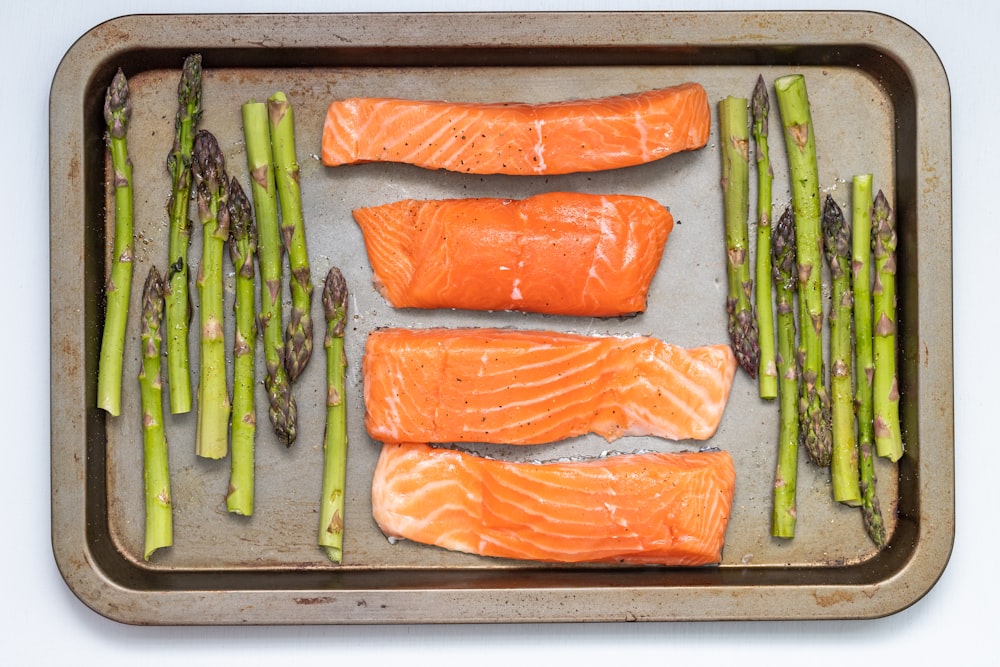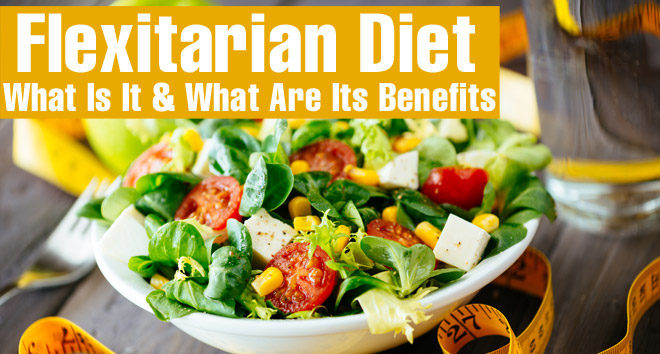What is a flexitarian diet?
A flexitarian diet is a semi-vegetarian way of eating devised by dietician Dawn Jackson Blatner that focuses on eating plant-based meal, with meat, poultry and fish included sparingly. There are no clear-cut rules or specific number of recommended calories and macronutrients, making it more appealing to people who want reap the benefits of vegetarian eating while still enjoying animal products in moderation.

In general sense, being in a flexitarian diet means that you’re a flexible vegetarian. This might sound like just a fancy word for omnis but who cares about the label if they’re making steps to reduce their meat consumption? As Confucius puts it, “better a diamond with a flaw, than a pebble without.”
Transitioning
For most people, it can be tough to quit meat & cold turkey because of too many appetizing meat dishes available on the market. As much as you might like an entire nutritional overhaul, too much change can be intimidating and frankly impossible to maintain for more than a few weeks. Flexitarian diet helps transition away from a meat-centric meal plan in a gradual manner.
Potential Health Benefits of a Flexitarian Diet
Weight Management

Choosing flexitarian diet as your eating style means limiting high-calorie, processed foods and eating more plant foods that are naturally lower in calories. Studies have shown that being in a plant-based diet is associated with reduced body weight. Since Flexitarian diet is closer to vegetarian diet, it may help with weight loss but not as much as a vegetarian diet would.
Improved Heart Health
A higher intake of fiber, healthy fats and anti-oxidants are good for heart health. A study following 45,000 adults over 11 years found that vegetarians had a 32% lower risk of heart disease, compared to non-vegetarians. This is likely due to the fact that plant-based diets are associated with lower blood pressure, lower total cholesterol and increased HDL cholesterol. However, since these studies was conducted on strictly vegetarian diets, it’s hard to assess if the Flexitarian Diet would have the same effect on blood pressure and heart disease risk.
Decreased Risk of Diabetes
Diets high in soluble fiber and phytosterols can help prevent cholesterol from being absorbed and may also benefit blood glucose management in diabetes. Plant-based diets aid weight loss and contain many foods that are high in fiber and low in unhealthy fats and added sugar. A study in over 60,000 participants found that the prevalence of type 2 diabetes was 1.5% lower in semi-vegetarians or flexitarians compared to non-vegetarians. Additional research showed that people with type 2 diabetes who ate vegetarian diets had a 0.39% lower hemoglobin A1c (three-month average of blood sugar readings) than those with the condition who ate animal products.
Decreased Risk of Cancer
Fruits, vegetables, nuts, seeds, whole grains and legumes all have nutrients and antioxidants that may help prevent cancer. Research suggests that vegetarian diets are associated with a lower overall incidence of all cancers but especially colorectal cancers. A 7-year study on cases of colorectal cancers in 78,000 people found that semi-vegetarians were 8% less likely to get this type of cancer, compared to non-vegetarians. Therefore, incorporating more vegetarian foods by eating flexitarian may reduce your cancer risk.
Decreased Risk of Kidney Disease
The National Kidney Foundation suggests that a reduction of animal protein intake and increased consumption of plant-based foods not only may reduce cardiovascular risk, mortality rate from heart disease and kidney disease but also by reducing animal protein intake, phosphate content of the diet would also be reduced benefiting those already diagnosed with chronic kidney disease.
Good for the environment
Sharply reducing meat consumption can help preserve natural resources by decreasing greenhouse gas, emissions, as well as land and water use. A review of the research on the sustainability of plant-based diets found that switching from the average Western diet to flexitarian eating, where meat is partially replaced by plant foods, could decrease greenhouse gas emissions by 7%. Eating more plant foods will also drive the demand for more land to be devoted to growing fruits and vegetables for humans instead of feed for livestock. Cultivating plants requires far fewer resources than raising animals to eat. In fact, growing plant protein uses 11 times less energy than producing animal protein.
The Flexitarian Diet may aid weight loss and reduce your risk of heart disease, cancer, and type 2 diabetes. It can also be good for the planet since it uses fewer fossil fuels and water. However, most research analyzes vegetarian and vegan diets, making it difficult to assess if flexitarian eating has similar benefits.
Potential Pitfalls of Reducing Meat Consumption
Although plant-based diet offers various health advantages, it should be planned carefully (preferably with a dietitian) to ensure adequate nutrition. People who incorporate any plant-based diet may be at risk of nutrient deficiencies listed below:
- Vitamin B12– Since plant-based foods do not contain significant amounts of vitamin B12, vegans must consume foods fortified with B12 and/or via a supplement. However, lacto-ovo or lacto vegetarians can meet their B12 needs through the consumption of dairy products.
- Vitamin D– Vitamin D levels can be affected by sun exposure, diet, supplement use, and skin pigmentation. Low vitamin D status has been associated with reduced bone mass and other health challenges. Regular consumption of vitamin D fortified foods like milk, soy beverages, orange juice, and cereals, along with dietary supplementation, can help improve vitamin D status.
- Omega-3’s: Vegetarian diets that don’t include fish are usually high in omega-6 fatty acids while lacking in omega-3 fats. There are 2 types of long chain omega-3 fatty acids that are essential to health: eicosapentaenoic acid (EPA) and docosahexaenoic acid (DHA). These long chain omega-3’s are easily absorbed in the body and typically found in fatty fish and to a lesser extent in some shellfish. An alternative for vegans is to consume sea algae, which is rich in the DHA form of omega-3s. Aside from algae, all other plant sources contain the short chain omega-3 fat called alpha-linolenic acid (ALA). Even though ALA is beneficial to your health, it doesn’t convert as readily into the essential DHA or EPA form of omega-3 fatty acids. This means that vegetarians must consume more of the ALA-rich food to gain the same health benefits as one would from fatty fish.
- Iron: Plant based foods contain non-heme iron which means that there are inhibitors that can impact the absorption of iron. However simple cooking preparation techniques can reduce inhibitors like phyates and enhance iron’s absorption. These techniques include soaking or sprouting beans, grains and seeds; leavening of breads and fermenting vegetables like cabbage to make sauerkraut or kimchee. Also, consuming foods that are rich in Vitamin C along with non-heme iron sources can enhance absorption.
If the diet is well-planned and includes a variety of whole foods, nutritional deficiencies may not be a concern.
Foods to Eat on the Flexitarian Diet

Proteins: Soybeans, tofu, tempeh, legumes, lentils.
Non-starchy vegetables: Greens, bell peppers, Brussels sprouts, green beans, carrots, cauliflower.
Starchy vegetables: Winter squash, peas, corn, sweet potato.
Fruits: Apples, oranges, berries, grapes, cherries.
Whole grains: Quinoa, teff, buckwheat, farro.
Nuts, seeds and other healthy fats: Almonds, flaxseeds, chia seeds, walnuts, cashews, pistachios, peanut butter, avocados, olives, coconut.
Plant-based milk alternatives: Unsweetened almond, coconut, hemp and soy milk.
Herbs, spices and seasonings: Basil, oregano, mint, thyme, cumin, turmeric, ginger.
Condiments: Reduced-sodium soy sauce, apple cider vinegar, salsa, mustard, nutritional yeast, ketchup without added sugar.
Beverages: Still and sparkling water, tea, coffee.
When incorporating animal products, choose the following when possible:
Eggs: Free-range or pasture-raised.
Poultry: Organic, free-range or pasture-raised.

Fish: Wild-caught.
Meat: Grass-fed or pasture-raised.
Dairy: Organic from grass-fed or pastured animals.
The Flexitarian Diet includes a variety of whole plant-based foods with an emphasis on plant over animal proteins. When including animal products, consider choosing free-range eggs, wild-caught fish and grass-fed meat and dairy.
Foods to Minimize on the Flexitarian Diet
Processed meats: Bacon, sausage, bologna.
Refined carbs: White bread, white rice, bagels, croissants.
Added sugar and sweets: Soda, donuts, cakes, cookies, candy.
Fast food: Fries, burgers, chicken nuggets, milkshakes.
A Sample Flexitarian Meal Plan for One Week
This one-week meal plan provides you with the ideas you need to start eating flexitarian.
Monday
Breakfast: Steel-cut oats with apples, milled flaxseed and cinnamon.
Lunch: Salad with greens, shrimp, corn, black beans and avocado.
Dinner: Lentil soup with whole-grain bread and a side salad.
Tuesday
Breakfast: Whole-grain toast with avocado and poached eggs.
Lunch: Burrito bowl with brown rice, beans and vegetables.
Dinner: Zucchini noodles with tomato sauce and white beans.
Wednesday
Breakfast: Coconut yogurt with bananas and walnuts.
Lunch: Whole-grain wrap with hummus, vegetables and chickpeas.
Dinner: Grilled salmon, baked sweet potato and green beans.
Thursday
Breakfast: Smoothie made with unsweetened almond milk, spinach, peanut butter and frozen berries.
Lunch: Kale Caesar salad with lentils and tomato soup.
Dinner: Baked chicken, quinoa and roasted cauliflower.
Friday
Breakfast: Greek yogurt with blueberries and pumpkin seeds.
Lunch: Chard wraps with mixed veggies and peanut dipping sauce.
Dinner: Lentil stew and a side salad.
Saturday
Breakfast: Over-easy eggs with sauteed veggies and fruit salad.
Lunch: Peanut butter sandwich with crushed berries on whole-grain bread.
Dinner: Black bean burgers with avocado and sweet potato fries.
Sunday
Breakfast: Tofu scramble with mixed veggies and spices.
Lunch: Quinoa salad with dried cranberries, pecans and feta cheese.
Dinner: Stuffed bell peppers with ground turkey and a side salad.
Eating a flexitarian diet is about limiting the consumption of meat and animal products while focusing on nutritious plant-based foods. Some people may choose to eat more or fewer animal products than shown in the above meal plan. This one-week meal plan provides meal ideas to get you started with flexitarian eating. Depending on your preferences, you may choose to take away or add more animal products.

Want to learn more? Click here!
Comments
0 comments


This is a great article, but you can’t lose weight until you try this: http://bit.ly/3sYjWoU
Can you be more specific about the content of your article? After reading it, I still have some doubts. Hope you can help me. https://www.binance.com/id/register?ref=RQUR4BEO